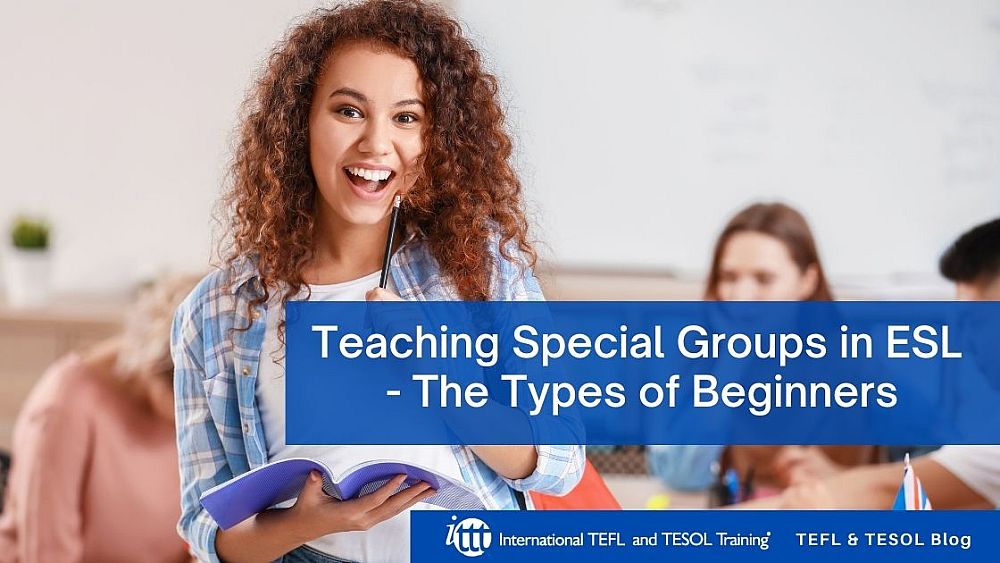Teaching Special Groups in ESL - The Types of Beginners

The first thing to bear in mind when we're looking at the category of beginners is that beginners can be of any age and experience, so really what we should do is to break the beginner category down into a number of sub categories.
Table of Contents
Watch the video about this topic
Adult Beginners vs. Young Beginners
Beginners without Roman Alphabet
Are you ready to teach English as a foreign language?
Check out what our course grads say in our many video testimonials!
Watch the video about this topic
The Absolute Beginner
Our first group we may call the absolute beginner, the second group we could have are called false beginners. The next category may be the adult beginners and therefore the category of young beginners and our final grouping called beginners without the Roman alphabet.
The absolute beginner as the name implies are those people with no language knowledge of the particular language being learnt, so they've never been taught it and they probably have had no exposure to it either. Their knowledge of the language is zero when you first meet them.
The False Beginner
This is different to the next group, the false beginner. The false beginner is at the beginner level although they have had some exposure to the language. This could be that they were taught it a long time ago and they've now forgotten it all or perhaps they've had some exposure to the language through tourism or maybe even just the TV and radio.
Adult Beginners vs. Young Beginners
The next two groupings are the adult beginners and the young beginners. Obviously these categories are fairly self-explanatory; the only difference comes between where we recognize the young beginner to finish and the adult beginner to start. Typically we're looking at an age somewhere between 16 and 18 for the separation of these two categories.
Beginners without Roman Alphabet
The final group is called the beginners without Roman alphabet. For these students the types of lessons that we're going to be doing at the start of the course are going to have to include very simple structures, such as the actual alphabet itself.
Conclusions
With five different categories of beginner, it is very important that we are aware of how our classes are made up. Are all the beginners of the same type and if not what is the mixture?
Planning of your lessons must take account of the different beginner groupings and the individual student needs.
You may need to differentiate or grade your lesson plans to the different sublevels if the group is of a mixed beginner type.
Are you ready to teach English as a foreign language?
Apply now & get certified to teach english abroad!
Speak with an ITTT advisor today to put together your personal plan for teaching English abroad!
Send us an email or call us toll-free at 1-800-490-0531 to speak with an ITTT advisor today.
Related Articles:
- Top 10 Cities in Europe with the Highest Demand for English Language Teachers
- 5 Reasons To Take A TEFL Course Right Now - Even If You Are Not Leaving Yet | ITTT | TEFL Blog
- All the Documents You Will Need to Teach English Abroad
- The Impact of Positive Motivation on an ESL Classroom
- You're Never Too Old to Change Your Life and Do a TEFL Course | ITTT | TEFL Blog
- Getting Student Placement Right - The Best Desk Arrangements for EFL Students



